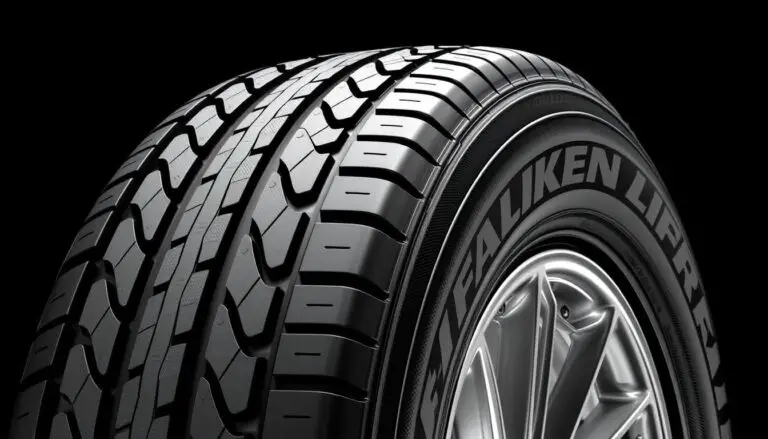When it comes to vehicle safety, few things are as important yet as commonly overlooked as understanding your tire’s load index. Those small numbers on your tire’s sidewall aren’t just random digits – they’re critical safety information that tells you exactly how much weight your tires can safely support. Misinterpreting or ignoring this information can lead to dangerous driving conditions, premature tire wear, and even catastrophic tire failure.
In this comprehensive guide, we’ll break down the tire load index chart in simple terms, explain why it matters for every driver, and show you exactly how to use this information to keep yourself and your passengers safe on the road.
What Is a Tire Load Index?
The tire load index is a numerical code that indicates the maximum weight capacity of a tire when properly inflated. This standardized number corresponds to a specific weight value measured in pounds (or kilograms). The higher the load index number, the greater the tire’s load-carrying capacity.
You’ll find the load index on your tire’s sidewall after the tire size information. For example, in a tire marked “P215/65R15 95H,” the number “95” is the load index, indicating this tire can safely carry up to 1,521 pounds when properly inflated.
Most passenger vehicles have load index values ranging from 75 to 100, but some vehicles, particularly trucks and SUVs, may require tires with higher load indexes to safely carry their weight and any additional cargo.

How to Decode the Tire Load Index Chart
The tire load index chart translates those numerical codes into actual weight capacities. Each number corresponds to a specific maximum weight that the tire can safely support. Here’s how to use the chart:
- Find the load index number on your tire’s sidewall (it appears after the tire size and before the speed rating)
- Locate that number in the load index chart below
- Note the corresponding weight capacity in pounds
- Multiply that weight by the number of tires on your vehicle (typically four) to determine your vehicle’s total load capacity
Remember that this capacity assumes your tires are properly inflated to the manufacturer’s recommended pressure. Underinflated tires will have a reduced load capacity, which can lead to dangerous driving conditions.

Common Tire Load Index Chart
| Load Index | Weight Capacity (lbs) | Load Index | Weight Capacity (lbs) |
| 85 | 1,135 | 93 | 1,433 |
| 86 | 1,168 | 94 | 1,477 |
| 87 | 1,201 | 95 | 1,521 |
| 88 | 1,235 | 96 | 1,565 |
| 89 | 1,279 | 97 | 1,609 |
| 90 | 1,323 | 98 | 1,653 |
| 91 | 1,356 | 99 | 1,709 |
| 92 | 1,389 | 100 | 1,764 |

Why Adhering to Load Ratings Matters
Safety

Overloaded tires are more prone to blowouts and failure, especially at highway speeds or during emergency maneuvers. This can lead to loss of vehicle control and serious accidents.
Tire Longevity

Exceeding the load index causes excessive heat buildup and stress on tire components, leading to accelerated wear, reduced tread life, and premature tire replacement.
Legal Compliance

Many jurisdictions have regulations requiring vehicles to be equipped with tires that meet or exceed the manufacturer’s load capacity specifications. Non-compliance can result in fines or insurance issues.
Warning: Never install tires with a lower load index than what is specified by your vehicle manufacturer. Doing so creates a dangerous condition where your tires cannot safely support your vehicle’s weight.
Special Cases: Light Trucks and Dual Tire Setups
Light truck tires and vehicles with dual rear wheels have special considerations when it comes to load index:

Light Truck Tire Load Index
Unlike passenger tires that display a single load index, light truck tires often show two load index numbers separated by a slash (for example, “120/116”). The first number indicates the load capacity for single-wheel applications, while the second shows the capacity when used in dual-wheel configurations.
For example, a light truck tire with a load index of 120/116 has a maximum capacity of 3,086 pounds as a single tire, but 2,756 pounds per tire when used in a dual setup. This reduction accounts for the fact that if one tire in a dual setup fails, the remaining tire must be able to temporarily carry the load safely.

Always consult your vehicle’s owner manual for the specific load index requirements. For trucks and commercial vehicles, these requirements may be more complex and critical to safe operation.
Frequently Asked Questions About Tire Load Index
Can you exceed the load index temporarily?
No, you should never exceed your tire’s load index, even temporarily. Tires are designed with specific safety margins, and exceeding the load index eliminates these margins. Even short periods of overloading can cause internal damage to the tire that may not be immediately visible but can lead to failure later.
How does load index interact with speed ratings?
Load index and speed ratings work together to define a tire’s safe operating parameters. The load index specifies how much weight the tire can carry, while the speed rating indicates the maximum speed at which the tire can safely carry that load.
It’s important to note that as speed increases, a tire’s load capacity may decrease. Some tire manufacturers provide separate load capacity tables for different speeds. Always follow both the load index and speed rating recommendations for your vehicle.
What happens if you ignore the tire load index chart?
Ignoring the tire load index chart and using tires with inadequate load capacity can lead to several serious consequences:
- Increased risk of tire failure, blowouts, and accidents
- Excessive heat buildup causing internal tire damage
- Poor vehicle handling and braking performance
- Accelerated and uneven tire wear
- Potential voiding of tire warranty and vehicle insurance
- Legal liability in case of accidents caused by tire failure
Can I use tires with a higher load index than recommended?
Yes, you can use tires with a higher load index than what your vehicle manufacturer recommends. This provides an additional safety margin. However, tires with higher load indexes may have stiffer sidewalls, which could affect ride comfort and handling characteristics.
When upgrading to a higher load index, make sure all other tire specifications (size, speed rating, etc.) still match your vehicle’s requirements.

Practical Application: Calculating Your Vehicle’s Needs
To determine if your tires have adequate load capacity for your vehicle, follow these steps:
- Find your vehicle’s Gross Vehicle Weight Rating (GVWR) in the owner’s manual or on the driver’s door jamb sticker
- Divide this number by 4 (for a typical four-wheel vehicle) to get the minimum per-tire load capacity needed
- Find the load index on your current tires and check the corresponding weight in the load index chart
- Ensure the per-tire capacity meets or exceeds your calculated minimum requirement

Example Calculation: If your vehicle’s GVWR is 6,000 pounds, each tire needs to support at least 1,500 pounds (6,000 ÷ 4). Consulting the load index chart, you would need tires with a load index of at least 94 (which supports 1,477 pounds) or preferably 95 (which supports 1,521 pounds).
Remember that this is a simplified calculation. For optimal safety, consider additional factors like weight distribution (front vs. rear), passenger and cargo weight, and towing requirements. When in doubt, consult with a tire professional.

Conclusion: Safety Starts With Understanding Your Tires
The tire load index chart may seem like just another technical specification, but it’s actually a crucial safety feature that helps ensure your tires can safely support your vehicle under all conditions. Taking the time to understand and adhere to these ratings is an essential part of responsible vehicle ownership.
Remember these key takeaways:
- Always use tires with a load index that meets or exceeds your vehicle manufacturer’s specifications
- Never exceed the maximum load capacity indicated by your tire’s load index
- Maintain proper tire inflation to ensure your tires can support their rated load
- Consider your typical cargo and passenger load when selecting tires
- When in doubt, consult with a tire professional for expert guidance
By understanding the tire load index chart and selecting the right tires for your vehicle, you’re taking an important step toward safer driving for yourself, your passengers, and everyone else on the road.



